Chengdu, the capital city of Sichuan Province is full of life and beauty. It is a mesmerizing city because of its history, its nature, and sophisticated modern-day Chengdu. The city is a metropolis with many beautifully crafted skyscrapers and monuments that reveal its history for the rest of the world to see. Chengdu has a lot to offer, from ancient site explorations, grooming and cuddling with the most famous giant pandas in the world to indulging in Sichuan cuisine. This itinerary is set to indulge those looking to travel to Chengdu in 2025 and boasting the city’s finest multicultural cuisine. This is the outline of a travel guide Chengdu advocates. In addition to the culmination of Chengdu’s attractions, which stunningly skillful monuments every inch reveals, this blog will ensure every traveler will return to Chengdu, and many more travelers set foot in this breathtaking metropolis.
What are the must-visit attractions in Chengdu?
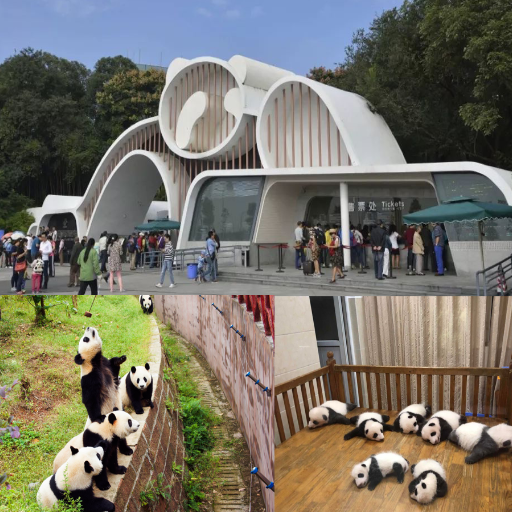
How to maximize the visit to Chengdu’s Panda Base?
To get the most out of your trip to Chengdu Research Base of Giant Panda Breeding, it is best to go during morning hours, as the pandas are particularly active during their feeding. The base is extensive and built to replicate the pandas’ natural habitat, so wearing comfortable walking shoes is a must to get around the different enclosures and exhibits. Each visit starts with the panda nursery, where visitors can see baby cubs, followed by tests including adult and sub-adult panda enclosures. Make your visit even more informative by going on a guided tour, or renting an audio guide. The guided services will cover the details of conservation efforts and breeding programs in place. In order to avoid crowds and the pristine experience, taking advantage of off-peak times to arrange your visit or reserving tickets online beforehand are great options.
Is it worth taking a trip from Chengdu to see the Leshan Giant Buddha?
It is worth visiting from Chengdu because of its historical, cultural, and architectural importance. This UNESCO World Heritage Site is approximately 2 hours out of Chengdu, China. From the site’s website: more than 1,000 years ago, the Giant Buddha statue in Leshan first opened its stone eyes to look over the city. It is the largest stone Buddha statue in the world, reaching over 71 meters tall. Besides the one-in-a-million construction feat and Buddhist devotion, this statue represents an unparalleled combination of engineering and dedication which ancient China profoundly mastered. Visitors are enthralled by the combination of the meticulously carved statue and the beautiful riverside setting at the joining of three rivers, the surrounding trails and the view from them, and much more. It is also an easy day trip because of the numerous transportation options, like high-speed trains and private tours.
Which Cultural Sites Are of Utmost Importance in Chengdu City?
As the capital city of Sichuan Province, Chengdu has many cultural landmarks which preserve the region’s rich heritage. Du Fu Thatched Cottage was home to the notable Tang Dynasty poet Du Fu and today serves as a museum and memorial that outlines his literary works. Another must-see site that showcases Chengdu’s history is Chengdu Jinli Ancient Street, where breathtaking buildings from the past are juxtaposed with mouth-watering local food and an energetic business setting. Another distinctive site is the Wuhou Shrine dedicated to Zhuge Liang, a famed character from the Three Kingdoms era. The site is also famous for its decorative gardens that mark the area’s history. All of these places represent the fine art and culture that Chengdu is known for.
When is the best time to visit Chengdu?
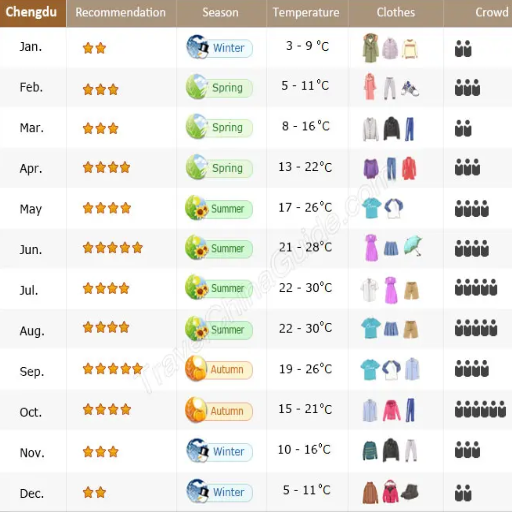
When is the best time to plan a Chengdu travelling tour?
The most preferred months to visit Chengdu are spring months, which are March to June, and autumn months, which are September to November, which border these two seasons. The weather during Spring and Autumn is particularly mild and pleasant. Spring is arguably the most beautiful season due to blooming flowers and vibrant greenery. The northern part of Chengdu is equally appealing, with cooler temperatures and clear skies in Autumn, providing ideal conditions for exploration and enjoying outdoor attractions. Unlike the summer season, these months are also less rainy which makes traveling in Chengdu during these months much more pleasant.
In what ways does the weather influence the travel plans to Chengdu?
Traveling to Chengdu is significantly impacted by the weather as it affects the level of comfort and the outreach to different attractions. The weather patterns of the region are influenced by the humid subtropical climate Chengdu receives, with annual rainfall patterns of about 1000mm to 1200mm alongside an annual average temperature of around 16 degree Celsius or 61 degree Fahrenheit. Traveling to Chengdu during spring (March to June) and autumn (September to November) is recommended due to daily average temperatures of around 10 degrees Celsius and 25 degrees Celsius (50 degrees Fahrenheit and 77 degrees Fahrenheit) and moderate rainfall, generally below 80mm per month. Starting from the summer season, Chengdu becomes extremely hot and humidity levels begin to rise. Average temperatures exceed 28 degrees Celsius (82 degrees Fahrenheit), and monthly rainfall begins to surpass 200mm, making outdoor activities challenging. The winter months provide less rainfall, but daytime temperatures get cooler and stay around 5 degrees Celsius to 10 degrees Celsius (41 degrees Fahrenheit to 50 degrees Fahrenheit). Alongside comfort, these climatic aspects restrict visiting popular landmarks like Mount Qingcheng or the Giant Panda Base. Therefore, seasonal variations must be considered when planning travel to ensure maximum comfort and joy.
What’s the perfect itinerary for a Chengdu tour?
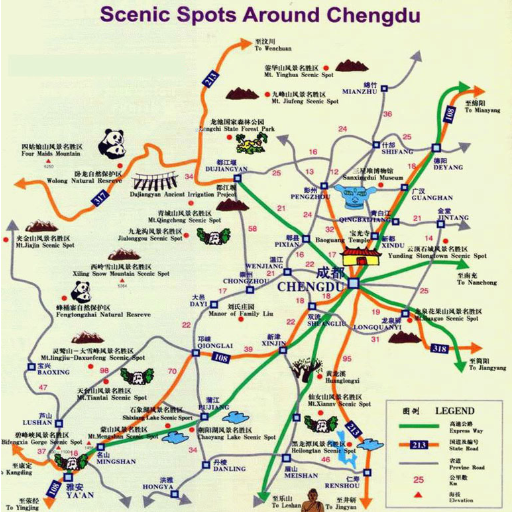
How many days should I spend in Chengdu?
A planned trip to Chengdu requires a visitor to spend at least 3-4 days in the city to capture all its key features. Chengdu has a unique culinary scene in which local Sichuan cuisine can be experienced so on the first day, one should visit the Chengdu Research Base of Giant Panda Breeding. The second day can be devoted to cultural landmarks like the Wuhou shrine and the Jinli Ancient street. An extra day or two can be spent visiting surrounding areas such as Mt. Qingcheng and the Dujiangyan Irrigation system, both of which are UNESCO World Heritage sites. The duration of 3-4 days seems reasonable to explore the thinks to do in the city and take in a few beautiful spots nearby.
Can I integrate Chengdu with other attractions within Sichuan?
Other iconic attractions that come to mind are Jiujang and Mt. Emei, a famous enclosure of astonishing hiking trails and breathtaking views. Moreover, Jiuzhaigou National Park is ideal for people who are fond of stunning landscapes. The park is reachable via a short flight or a longer overland route. Chengdu can indeed be combined with other places of interest as the transportation network is well-designed with high-speed trains and routes that make traveling around Sichuan very easy.
Which places are best to visit outside the city of Chengdu for a day?
Chengdu boasts a number of day trips from the city, including cultural and natural attractions. For example, the Leshan Giant Buddha is a very famous spot that is approximately two hours away by car or train. The site offers a stunning view of the statue carved on a cliff about 71 meters tall. This statue is considered one of the world’s wonders, along with Modern-day engineering feats, and offers a peak into some of the ancient Chinese civilization.
Another recommended excursion is Mount Qingcheng which is one of the birthplaces of Taoism. This mountain features Qingcheng, which is widely known for its lush forests, hiking trails, and temples, all provide easy access to Chengdu and a view of it in under 1.5 hours.
For nature lovers, the trip to Dujiangyan Irrigation System and Panda Base is second to none. The site is about an hour away, combining the visit to UNESCO with the Sight of the Giant Pandas in their conservation. These combine to give an all-around sense of Sichuan’s heritage and natural beauty.
How to plan a food tour in Chengdu?
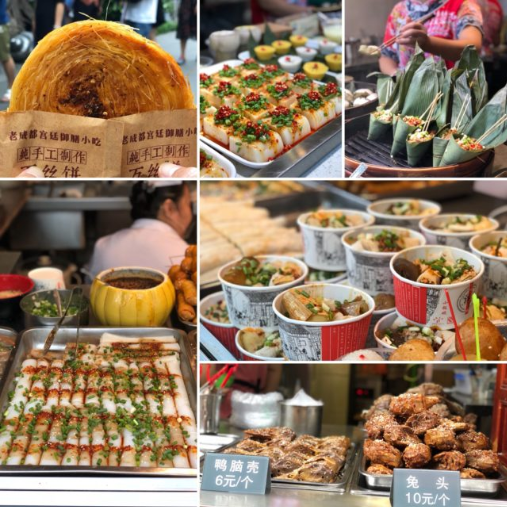
Where to find the best Sichuan hot pot in Chengdu?
Chengdu has the best Sichuan hot pot. For quality customer service coupled with refined taste, try visiting Haidilao Hot Pot, where the food speaks for itself. Some of the known reasons for its popularity include maintaining the boiling soup base at 95-100 degrees Celsius and outstanding preparation of fresh ingredients.
In Chengdu, Shujiuxiang Hot Pot stands out from the rest with its ‘mala’ (numbing and spicy) broth. The name speaks for itself, providing bold and spicy flavors specially crafted for hot pot lovers. Here, the spice-to-oil ratio is just right to make the broth tasty and fragrant. If you have different spice tolerance levels, Shujiuxiang also lets you adjust the amount of spice added to the broth.
Try Lao Ma Tou Hot Pot if you are looking for authenticity. With century-old recipes, highly refined Sichuan peppercorns and varieties of chilis are artfully blended to produce hot pot broth. Their toaster is precisely crafted for sizzling aromatic and great-tasting broth.
From ingredient freshness to soup combination intricacies, these places pay attention to preparing Sichuan hot pot, making them must-stop points for hot pot enthusiasts when visiting Chengdu.
What local meals should I not miss when visiting Chengdu?
Chengdu is known for its bold and eclectic daring flavors; this city has several dishes to try. A popular dish from Sichuan is Mapo Tofu, which is soft Tofu with minced meat cooked in a pervasively spicy sauce of Sichuan peppercorn and doubanjiang. Kung Pao Chicken is another essential dish that consists of tender chicken, peanuts, and chili peppers all brought together with the sauce that has a pivotal sweet and spicy balanced taste. One of its most important components is the Sichuan hot pot which has a wide array of fresh ingredients such as sliced beef, vegetables, and tofu. Dan dan noodles, a local favorite consisting of thin noodles tossed in spicy sauce, are a must, too. Finally, Sichuan is unique for its Twice-Cooked Pork, which combines tender pork belly stir-fried with leeks and chili bean paste, resulting in an unforgettably deep, rich flavor. Each cuisine shows the rest of the world Chengdu’s culinary treasures together with the sophisticated balance of heat, spice, and umami.
What are the options for panda tours in Chengdu?
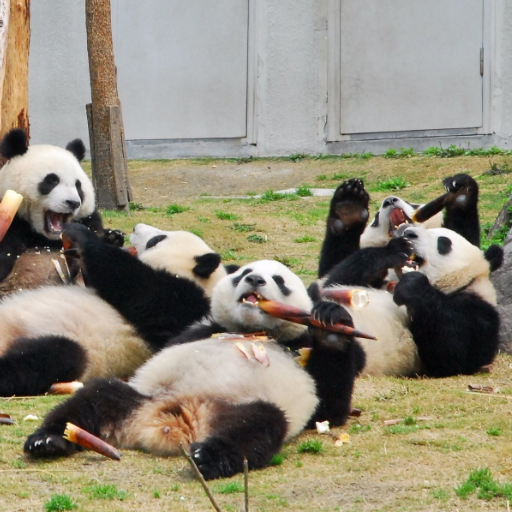
How do you get to the Chengdu Research Base for Giant Panda Breeding?
Chengdu Research Base is only 10 km from downtown Chengdu so getting there is very simple from almost all parts of Chengdu. Taxis, ridesharing services, as well as public buses No. 198 and No. 198A, can be used to get there. For people who happen to be in Chengdu during the eating hours of 7:30 AM to 6:00 PM, the best time to visit would be therapeutic les heures de pointe de eight 10h, when pandas are most active. Tickets are cheap and can be bought at the base or online ahead of time, so there’s no need to worry about running out of supplies. When people arrive, they will be able to find feeding enclosures, educational centers, and breeding centers. There is also an option of guided tours to people who want to make the most out of their visit. Since the park is large and rugged, with hills too, comfortable shoes are highly recommended.
What is unique about the Dujiangyan Panda Base?
For the people working at the Dujiangyan Panda Base come after focusing on panda conservation, rehabilitation, and research. Unlike some facilities, this one specializes in caring for elderly and disable giant pandas by providing them with a safe and healthy environment. Furthermore, visitors can participate in a number of volunteer programs, including panda feeding, enclosure cleaning and observing the animals while experts explain their behavior. In addition, the base is situated in the picturesque region close to Mount Qingcheng, which gives the visiting tourists more reasons to enjoy the peaceful environment.
How to explore Chengdu’s tea house culture?
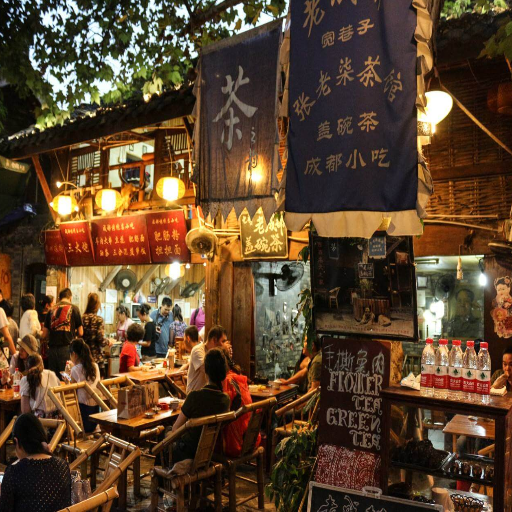
What tea houses in Chengdu are the most well-known?
Chengdu possesses an unparalleled culture of tea houses, encouraging the growth of several iconic establishments within the city. One of the tea houses that is most noted worldwide would be the Heming Tea House which is located in People’s Park, where a wide array of teas offered by the establishment are served in the traditional Sichuan style. Another famous restaurant is Shunxing Old Teahouse, which lies inside Chengdu’s International Exhibition Center and is well known for its cultural performances along with the traditional served tea. A Temple Wangye, the tea house, sits in an ancient temple and is famous for its tranquility and the rich heritage surrounding the tea-drinking traditions of Chengdu. These tea houses portray the hospitality and traditions maintained in the city, which is characteristic of Chengdu.
How can you participate in a traditional tea ceremony in Chengdu?
To take part in tea ceremonies in Chengdu, start by looking for a reliable tea house like the Heming Tea House, Shunxing Old Teahouse or Wangye Temple Teahouse where such ceremonies are done. Some places facilitate guided ceremonies and specific times, so try to make a reservation in advance. Once you arrive, listen to the instructions of the tea master, who will guide you through the detailed process of warming, steeping, and pouring tea. From a cultural perspective, participants must follow etiquette and sip slowly and understand the importance of each ritual, which is essential to Sichuan tea culture.
Reference sources
Frequently Asked Questions (FAQs)
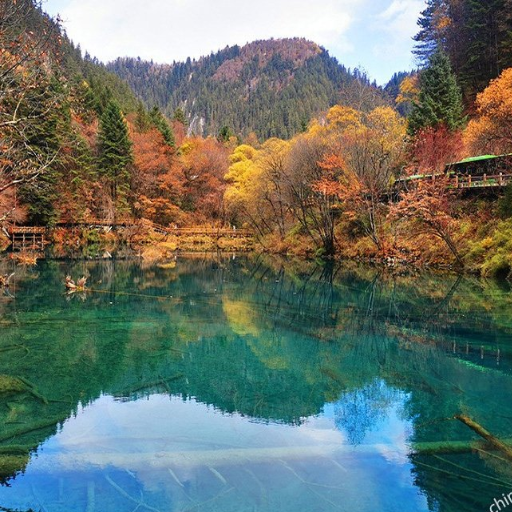
Q: What are the best China tour packages that include Chengdu?
A: Many China tour packages include Chengdu as part of a broader itinerary. Popular options often combine Chengdu with other major cities like Beijing, Shanghai, and Xi’an. Look for packages that feature the Chengdu Panda Base, local food tours, and nearby attractions like Mount Emei. Some of the best China tour packages also include visits to Jiuzhaigou Valley and Sanxingdui Museum for a comprehensive Sichuan experience.
Q: What are the must-visit attractions on a Chengdu tour?
A: A classic Chengdu tour should include visits to popular attractions like the Chengdu Research Base of Giant Panda Breeding, Wenshu Monastery, Jinli Ancient Street, and Kuanzhai Alley. Other highlights include the Leshan Giant Buddha, Mount Emei, and the Sanxingdui Museum. For food enthusiasts, exploring local markets and joining Chengdu food tours are essential experiences.
Q: What’s the best time to visit Chengdu?
A: Chengdu has a subtropical climate, making it a year-round destination. However, the best times for Chengdu tours are typically spring (March to May) and autumn (September to November) when the weather is mild and comfortable. These seasons are ideal for outdoor activities and sightseeing. Summer can be hot and humid, while winter is cool but rarely freezes, making it suitable for viewing giant pandas in Chengdu.
Q: How can I explore Chengdu’s food scene?
A: Chengdu is renowned for its cuisine, particularly its spicy Sichuan flavors. To explore Chengdu food, consider joining guided food tours that take you to local markets, street food stalls, and authentic restaurants. Don’t miss trying dishes like hot pot, mapo tofu, and kung pao chicken. The Wide and Narrow Alleys (Kuanzhai Xiangzi) and Jinli Street are great areas to sample various local delicacies.
Q: What’s the best way to see giant pandas in Chengdu?
A: The best place to see giant pandas in Chengdu is the Chengdu Research Base of Giant Panda Breeding, also known as the Chengdu Panda Base. It’s one of China’s top panda conservation centers and offers visitors the chance to observe pandas in a natural-like habitat. For the best experience, visit early in the morning when the pandas are most active. Some tours also offer opportunities to volunteer or participate in panda keeper programs.
Q: Can you recommend a private tour of Chengdu?
A: Private tours in Chengdu offer flexibility and personalized experiences. A comprehensive private tour might include visits to the Chengdu Panda Base, Wenshu Monastery, People’s Park, and a Sichuan opera performance. Many tour operators also offer day trips to nearby attractions like Leshan and Mount Emei. Private guides can provide deeper insights into local culture and help navigate language barriers, making them ideal for those wanting to explore Chengdu in depth.
Q: How do I plan a trip to Chengdu from abroad?
A: To plan a trip to Chengdu from abroad, start by checking visa requirements for China. Book flights to either Chengdu Shuangliu International Airport or Chengdu Tianfu International Airport. Choose a hotel in Chengdu’s city center for easy access to attractions. Consider joining organized China tours that include Chengdu in their itinerary, or plan your own itinerary focusing on key sites like the panda base, local temples, and food streets. Don’t forget to include day trips to nearby attractions like Mount Emei or Leshan.
Q: What are some unique experiences to have on a Chengdu tour?
A: Beyond the popular attractions, unique experiences in Chengdu include taking a tea ceremony class, learning to cook Sichuan cuisine, watching a face-changing performance at a Sichuan opera, and visiting a local mahjong house. For nature lovers, hiking on Mount Qingcheng or exploring the bamboo forests near Chengdu can be memorable. Additionally, visiting during festivals like the Lantern Festival or the Sichuan Cuisine Festival can provide special cultural insights.
Q: How many days should I spend in Chengdu?
A: To fully explore Chengdu and its surroundings, plan to spend at least 3-4 days in the city. This allows time to visit the Chengdu Panda Base, explore the city’s historical sites and food scene, and perhaps take a day trip to nearby attractions like Mount Emei or Leshan. If you want to include more sites like Jiuzhaigou Valley or have a more relaxed pace, consider extending your stay to 5-7 days.
Q: Are there any good day trips from Chengdu?
A: Yes, there are several excellent day trips from Chengdu. Popular options include visiting the Leshan Giant Buddha and Mount Emei, both UNESCO World Heritage sites. The Dujiangyan Irrigation System, an ancient engineering marvel, is another interesting day trip. For those interested in archaeology, the Sanxingdui Museum, showcasing artifacts from an ancient civilization, is about an hour’s drive from Chengdu. These day trips offer diverse experiences and showcase the rich cultural and natural heritage around Chengdu.